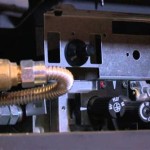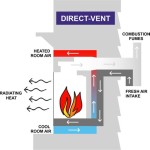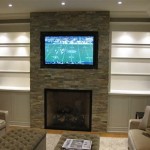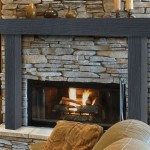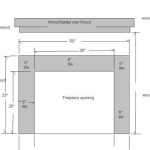Heatilator Fireplace Blower GFK4B: A Comprehensive Guide
The Heatilator Fireplace Blower GFK4B is a component designed to enhance the efficiency of compatible Heatilator fireplaces. These blowers are intended to circulate heated air from the fireplace into the room, thereby improving the overall heating capacity and distribution. Understanding the features, installation, troubleshooting, and maintenance of the GFK4B is crucial for optimizing fireplace performance.
Understanding the Functionality of a Fireplace Blower
A fireplace blower, such as the Heatilator GFK4B, operates by drawing cool air from the surrounding environment, passing it over the heated firebox of the fireplace, and then expelling the warmed air back into the room. This forced convection process significantly increases the rate at which heat is transferred from the fireplace to the living space. Without a blower, much of the heat generated by a fireplace is lost through the chimney or remains concentrated around the fireplace itself.
The effectiveness of a fireplace blower depends on several factors, including the size and design of the fireplace, the insulation of the surrounding walls, and the overall layout of the room. However, in general, a blower can significantly reduce the amount of time it takes to heat a room and maintain a more consistent temperature throughout the space.
The Heatilator GFK4B is typically designed for specific Heatilator fireplace models, ensuring a proper fit and optimal airflow. Using an incompatible blower can lead to reduced efficiency or even damage to the fireplace or blower itself. Therefore, verifying compatibility before installation is essential.
The components of a typical fireplace blower system include the blower motor, fan blades, a housing that directs airflow, and often a thermal switch or speed control. The thermal switch activates the blower only when the firebox reaches a certain temperature, preventing cool air from being circulated and maximizing energy efficiency. Speed controls allow users to adjust the airflow based on their heating needs and preferences.
The advantages of using a fireplace blower extend beyond improved heating efficiency. By distributing heat more evenly, blowers can help to reduce cold spots and improve overall comfort. They can also contribute to lower heating costs by reducing the reliance on central heating systems. In addition, some users find that the gentle circulation of air created by a blower helps to reduce stuffiness and improve air quality.
Installation of the Heatilator GFK4B
Installing the Heatilator GFK4B involves several steps and requires a basic understanding of electrical systems and fireplace components. It is generally recommended to consult the fireplace and blower's installation manuals before proceeding. If unfamiliar with electrical work, a qualified technician should perform the installation.
The initial step is to ensure that the fireplace is cool and disconnected from any power source. This is critical for safety. Locate the designated area for the blower installation. This is typically at the bottom or rear of the fireplace firebox. These locations are specifically designed to accommodate the blower unit and facilitate proper airflow.
The next step involves connecting the blower to the fireplace's electrical system. The Heatilator GFK4B usually comes with a pre-wired power cord that plugs into a standard electrical outlet. If the fireplace does not have a dedicated outlet, it may be necessary to install one or use an extension cord. Ensure that the extension cord is appropriately rated for the blower's power consumption. It is important to ensure that all electrical connections are secure and properly insulated to prevent electrical hazards.
Next, the blower unit is physically installed into the designated space. This often involves sliding the blower into place and securing it with screws or clips. Follow the manufacturer's instructions precisely to ensure that the blower is properly aligned and securely attached. Improper installation can lead to vibrations, noise, or reduced airflow.
After the blower is installed, test its operation. Turn on the fireplace and allow it to heat up. The thermal switch should automatically activate the blower when the firebox reaches a certain temperature. Verify that the blower is circulating air effectively. If the blower does not turn on, double-check the electrical connections and the thermal switch. If problems persist, consult the troubleshooting section of the installation manual or contact a qualified technician.
It is important to consider safety precautions during and after the installation. Keep flammable materials away from the fireplace and blower unit. Regularly inspect the blower for any signs of damage or wear. If any issues are detected, address them promptly to prevent potential fire hazards.
Proper installation is a key element of ensuring the longevity and effectiveness of the Heatilator GFK4B. Taking the time to follow the manufacturer's instructions carefully and addressing any issues that arise can prevent costly repairs and ensure optimal fireplace performance.
Troubleshooting Common Issues with the GFK4B
Even with proper installation and maintenance, issues can arise with the Heatilator GFK4B. Common issues include the blower not turning on, excessive noise, reduced airflow, and overheating. Addressing these problems promptly can prevent further damage and ensure continued efficient operation.
If the blower fails to turn on, first verify that the fireplace is hot enough to activate the thermal switch. If the fireplace is sufficiently heated, check the electrical connections to ensure that the blower is receiving power. A blown fuse or tripped circuit breaker can prevent the blower from operating. If the electrical connections are secure and the thermal switch is functioning properly, the blower motor itself may be faulty and require replacement.
Excessive noise can indicate several potential issues. Loose fan blades can cause rattling or vibration. Tighten the screws that secure the fan blades to the motor shaft. Debris accumulation within the blower housing can also cause noise. Remove the blower and clean out any dust, pet hair, or other debris. If the noise persists, the blower motor bearings may be worn and require lubrication or replacement.
Reduced airflow can be caused by obstructions in the air intake or exhaust vents. Check for blockages and clear them as necessary. A dirty air filter, if present, can also restrict airflow. Clean or replace the air filter regularly. In some cases, reduced airflow may indicate a weakening blower motor. A failing motor may not be able to generate sufficient airflow, requiring replacement.
Overheating can be a serious issue that can damage the blower motor or even create a fire hazard. If the blower motor is overheating, immediately turn off the fireplace and disconnect the blower from the power source. Overheating can be caused by restricted airflow, excessive debris buildup, or a faulty blower motor. Address the underlying cause of the overheating before attempting to restart the blower.
When troubleshooting, it is important to prioritize safety. Disconnect the blower from the power source before attempting any repairs. If unsure about any aspect of the troubleshooting process, consult a qualified technician. Attempting to repair the blower without proper knowledge and experience can be dangerous and may void the warranty.
Maintenance of the Heatilator GFK4B for Optimal Performance
Regular maintenance is essential for ensuring the longevity and optimal performance of the Heatilator GFK4B. A proactive maintenance schedule can prevent many common issues and extend the lifespan of the blower.
One of the most important maintenance tasks is to keep the blower clean. Dust and debris can accumulate within the blower housing, reducing airflow and causing the motor to overheat. Use a vacuum cleaner with a brush attachment to remove dust and debris from the blower housing, fan blades, and air vents. The frequency of cleaning will depend on the usage of the fireplace and the environment in which it is located. However, it is generally recommended to clean the blower at least once a year, or more frequently if necessary.
Regularly inspect the blower for any signs of damage or wear. Check the fan blades for cracks or bends. Ensure that all screws and fasteners are tight. Inspect the electrical connections for any corrosion or loose wires. Address any issues promptly to prevent further damage. Small issues can often be resolved quickly and easily, preventing them from escalating into more serious problems.
Lubrication is another important aspect of blower maintenance. The blower motor bearings require lubrication to operate smoothly and efficiently. Use a high-quality electric motor oil to lubricate the bearings. The type of oil and the frequency of lubrication will depend on the specifications of the blower motor. Refer to the manufacturer's instructions for guidance. Over-lubrication can be just as harmful as under-lubrication, so follow the instructions carefully.
If the blower is used infrequently, it is a good idea to run it periodically to prevent the motor from seizing up. Run the blower for a few minutes every month, even if the fireplace is not in use. This will help to keep the motor lubricated and prevent corrosion.
When performing maintenance, always disconnect the blower from the power source to prevent electrical shock. Use appropriate safety precautions, such as wearing gloves and eye protection. If unsure about any aspect of the maintenance process, consult a qualified technician.
By following a regular maintenance schedule, the Heatilator GFK4B can provide years of reliable and efficient service. Taking the time to care for the blower will not only improve its performance but also extend its lifespan, saving money on repairs and replacements in the long run.

Heatilator Gfk4b Blower Fan Kit Leisure Time Inc

Heatilator Fireplace Blower Fan Kit Gfk4b Hearth Trends

Gfk4b Heatilator Fan Kit With Timer Heatilatorparts Com

Heatilator Direct Vent Fireplace Blower Gfk4b Brand New Free Read Desc

Heatilator Gfk4b Blower Fan Kit Leisure Time Inc

Heatilator Direct Vent Fireplace Blower Gfk4b Brand New Free Read Desc

Heatilator Heat N Glo Direct Vent Fireplace Blower Kit Factory Oem Gfk4b For

Adviace Replacement Fireplace Blower Kit For Heatilator Majestic Lennox Temco Gfk4b Gfk4 Fk4 Gfk4a Fan Gnbc33 Ndv4236i Nd3933 Yahoo Ping

Gfk4 Gfk4a Fireplace Blower Only For Heatilator Fk4 Gfk4b R7 Rb64 Bv4236 Bv4842

Fireplace Blower Kit For Heatilator Majestic Lennox Temco Gfk4b Gf
Related Posts

